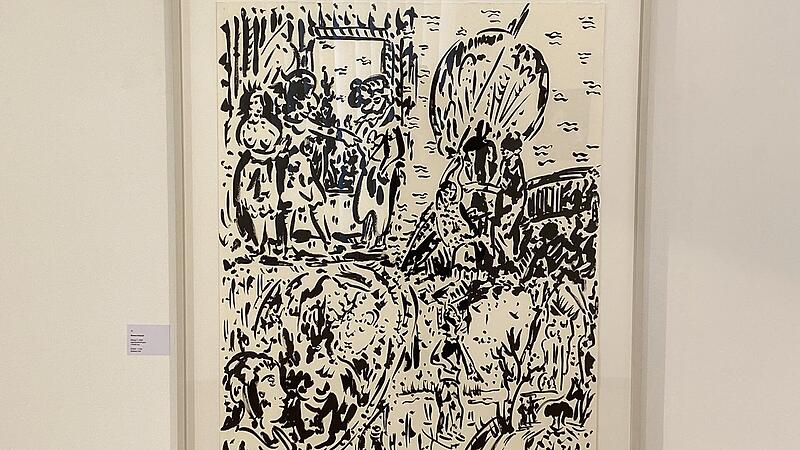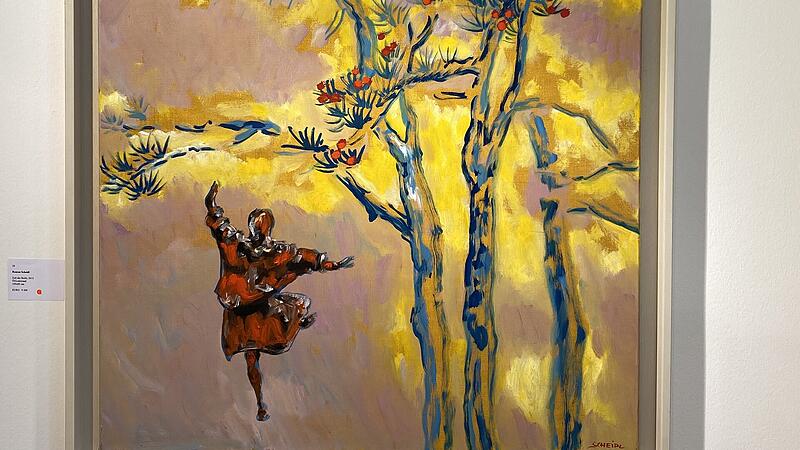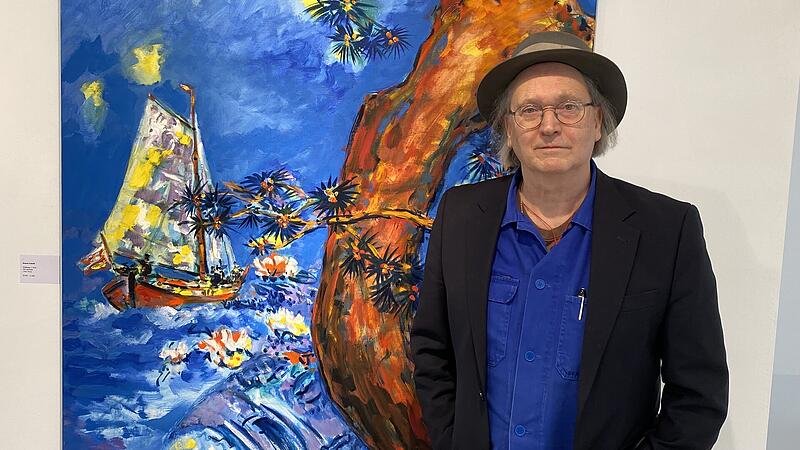His ink brush flies over the paper and yet sets the strokes with amazing precision. In a conversation with Roman Scheidl, the impression is created in no time at all that the 72-year-old artist, who was born in Leopoldsdorf (Lower Austria), has left everything oppressive and the grimaces of fear behind him anyway. “I have the luxury of not having to shit anymore,” says Scheidl in his credible and passionate way. He smiles like a secret hero who has defeated the demons.
All of his 27 ink and oil works between 3,200 and 22,000 euros in the Galerie in der Schmiede in Pasching radiate beauty in radiant colors together with a sensually underpinned calm, each fused with the wonder of nature. His defiance, with which Scheidl once sat out the contempt of Maximilian Melcher (1922-2002) in his graphics class at the Academy of Fine Arts in Vienna, has long since evaporated. Scheidl: “Melcher kicked me out right away, but I stayed and always went to the academy at night to work. He liked the fact that I didn’t let myself be expelled.” His fellow students included the “Young Wild Ones” Siegfried Anzinger and Hubert Schmalix.


The city of Linz had discovered him even before his first solo exhibition at the Albertina in 1976 brought him international attention: in 1973, Scheidl was awarded the Dr. Ernst Koref Prize here. The honorable art historian and publicist Otto Breicha advised Scheidl to swap graphics and etching needle for a brush, “since then I’ve never left the brush.”
In Zurich he met the Swiss choreographer and dancer Bettina Nisoli. “And I wanted to be part of their work in some way,” which gave rise to the idea of live drawings on an overhead projector merging with dance. He lived in Paris and Zurich, developed his ink brush technique based on Japanese art and kept his head above water with art criticism.
He documented his extensive travels in magnificent diaries, excerpts of which are published in the book “The World is Just a Brushstroke”. His partner Nisoli lost the fight against cancer in 1996, “after that I fell into a huge hole”. He later continued the dance performances with Katharina Puschnig and developed them anew. Tours to Japan, among others, followed. From 2004 to 2014 he made countless painting films for ORF and Bayerischer Rundfunk – and thus another project of Scheidl’s cross-genre collaborations that was difficult for artist colleagues to accept.


The fact that he accepted his own diversity despite years of self-doubt is thanks to the legendary curator and director of the Bern Kunsthalle Harald Szeemann (1933-2005). Scheidl: “At that time he did the exhibition ‘The slope to the total work of art?’ with Kurt Schwitters, Anselm Kiefer and many others. From this exhibition I knew where I belonged – and that artistic disciplines knew no borders.”
Exhibition: “Roman Scheidl – Freedom of Time”, gallery in the forge Pasching, until February 18, Opening hours: Fri 3-6 p.m. and by appointment: 0676/31 77 080.
Books about Roman Scheidl
“Roman Scheidl – Ateliers 1982 bis 1997” seen and photographed by Johann Klinger (1938-2002), 168 pages, 28 euros.
“Roman Scheidl – The world is just a brushstroke”, each publisher library of the province, 272 pages, 39 euros.
Source: Nachrichten




